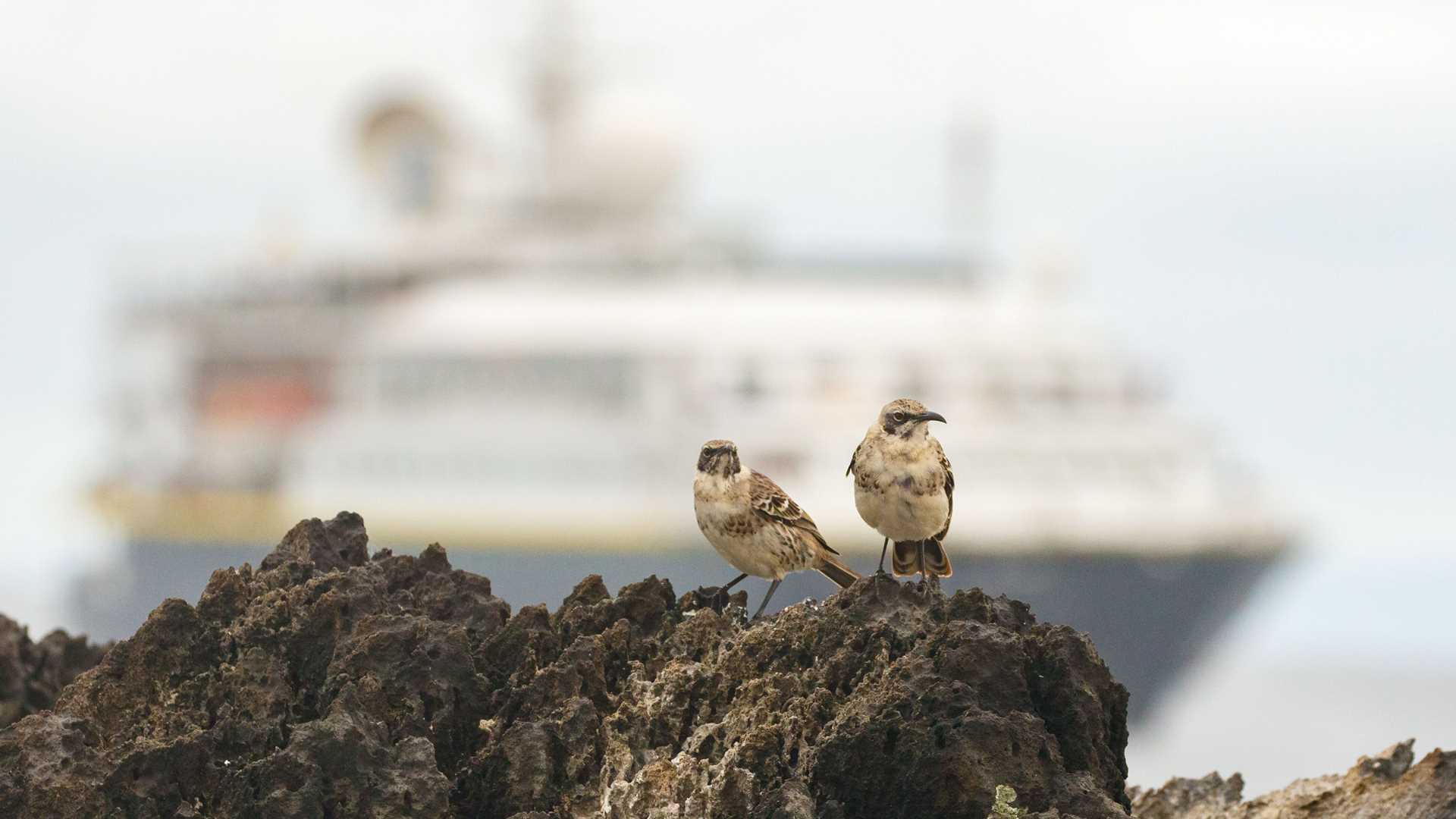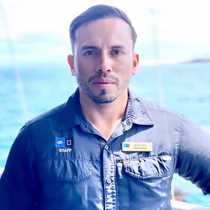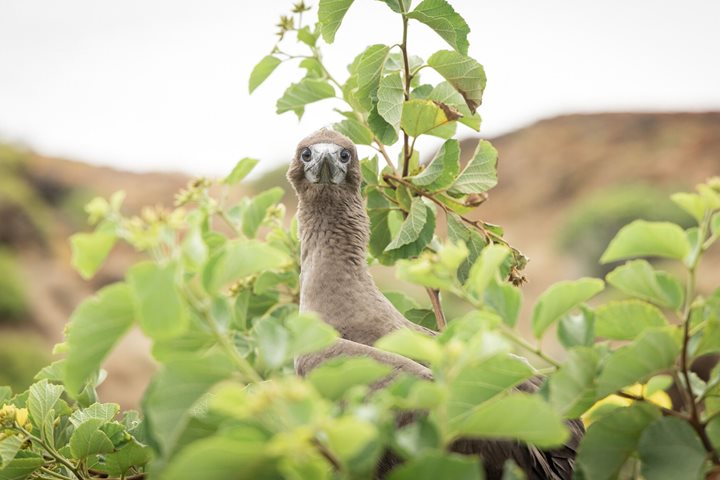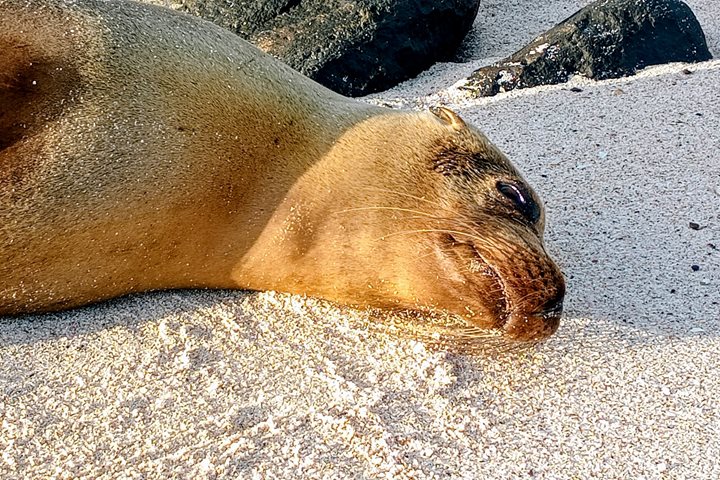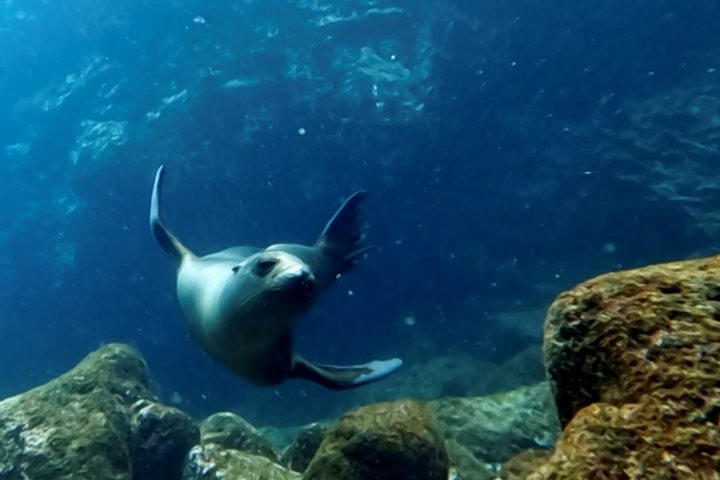We woke to a view of turquoise waters and a white sand beach along the coast of the oldest island in the Galapagos archipelago. Espanola has many species that are unique to its dry habitat and therefore endemic to Espanola itself, not just to the Galapagos.
We started our morning with a pre-breakfast kayak outing along the rocky shores of Espanola. We spotted a couple of Galapagos hawks, swallow-tailed gulls, Galapagos mockingbirds, and a few playful Galapagos sea lions swimming around our kayaks. After breakfast, we went deep water snorkeling and spotted a few Pacific green sea turtles, sea lions, and a large variety of fish. We also had the opportunity to walk along a white sandy beach and explore nature through our camera lenses.
After lunch, we had a dry landing to explore Punta Suarez. This visitor site has an incredible amount of wildlife, from marine iguanas to courting waved albatrosses, Galapagos hawks flying overhead, and a breathtaking landscape.
We had many incredible opportunities to practice our photography and learn about the natural history of this place.
One of the highlights of the afternoon was watching waved albatrosses perform their courtship dance a few feet away from us. It was an incredible experience to observe this behavior right in front of our eyes.
After a beautiful sunset, we came back to National Geographic Islander II to continue exploring the enchanted archipelago.

